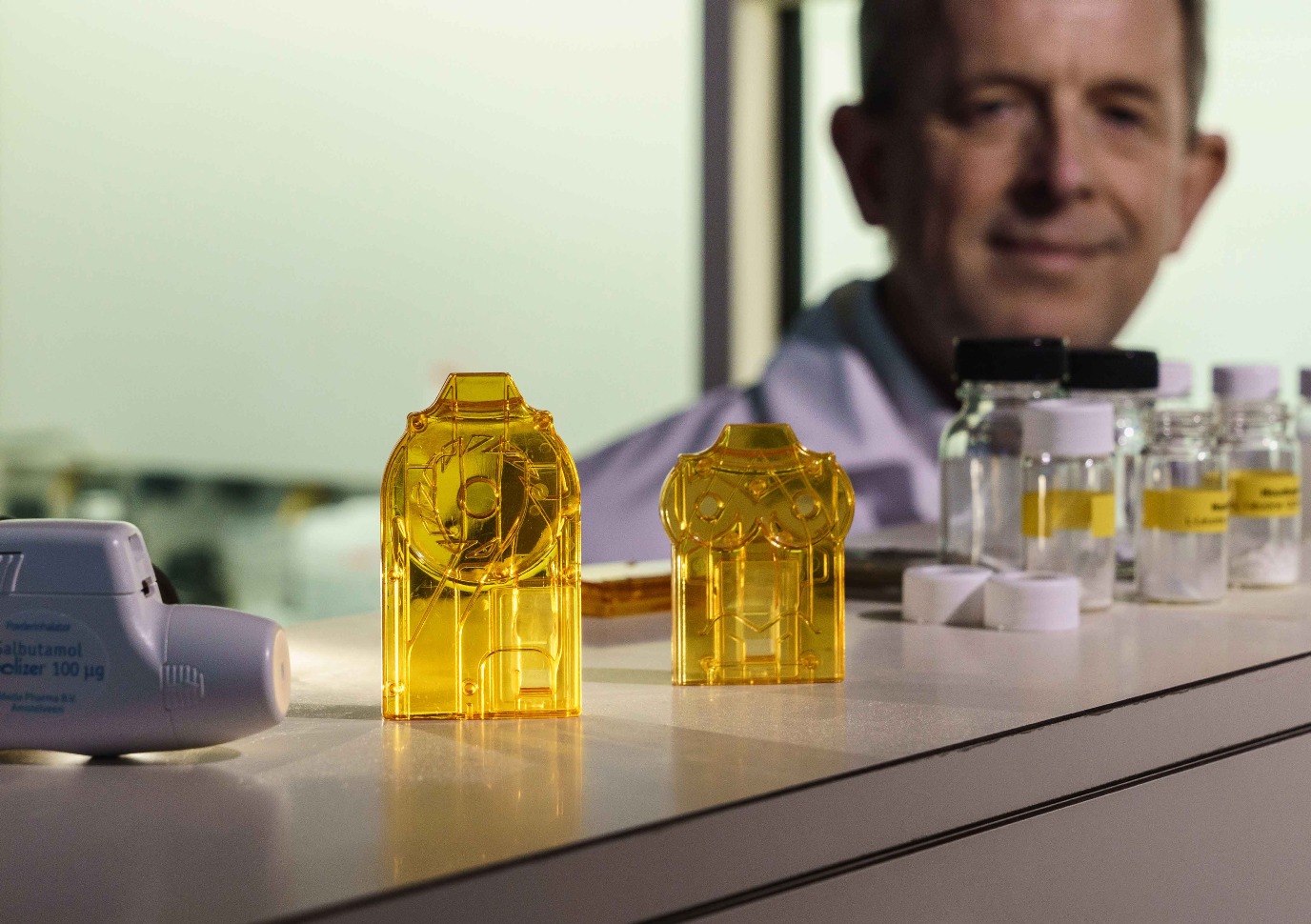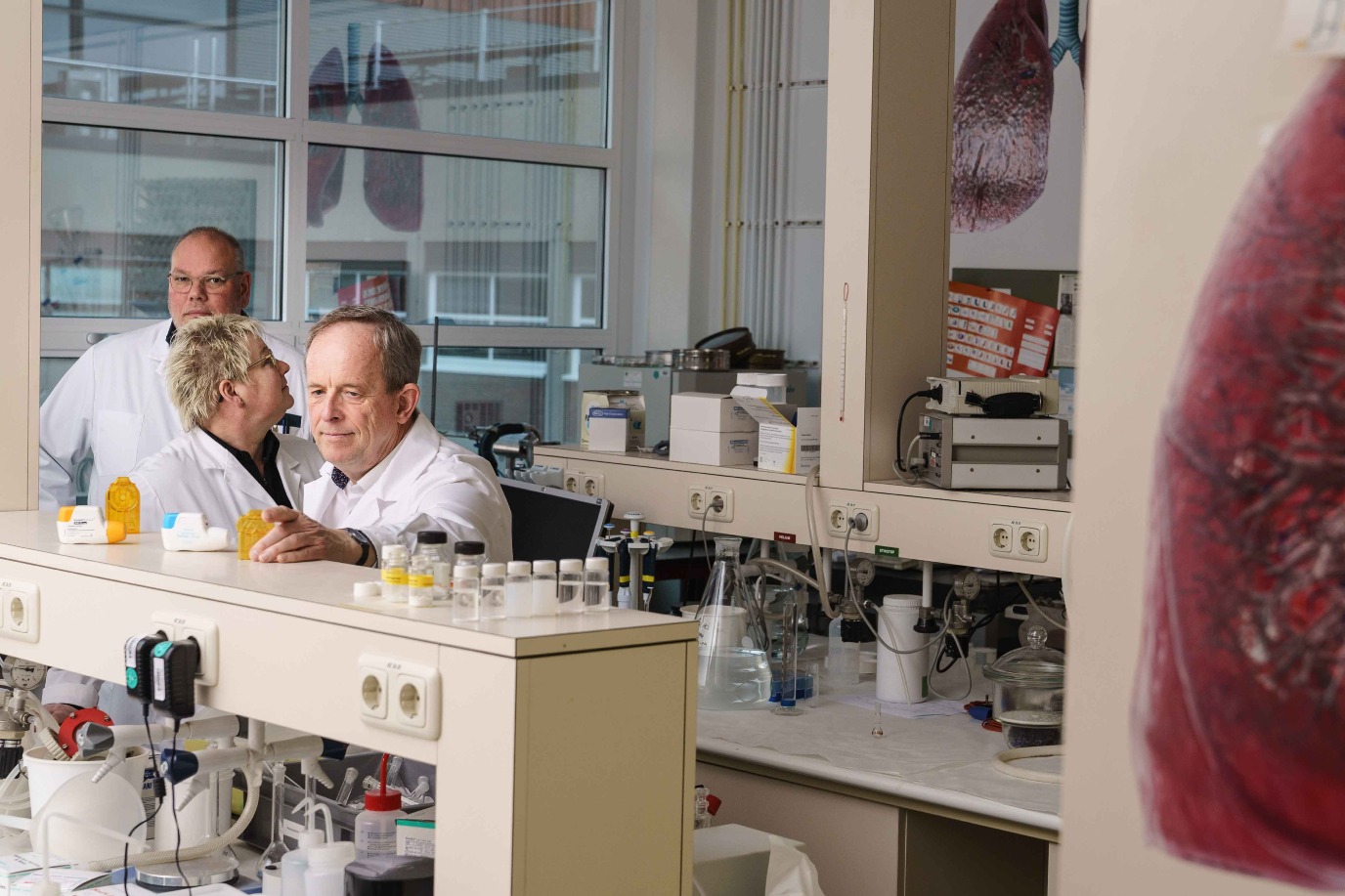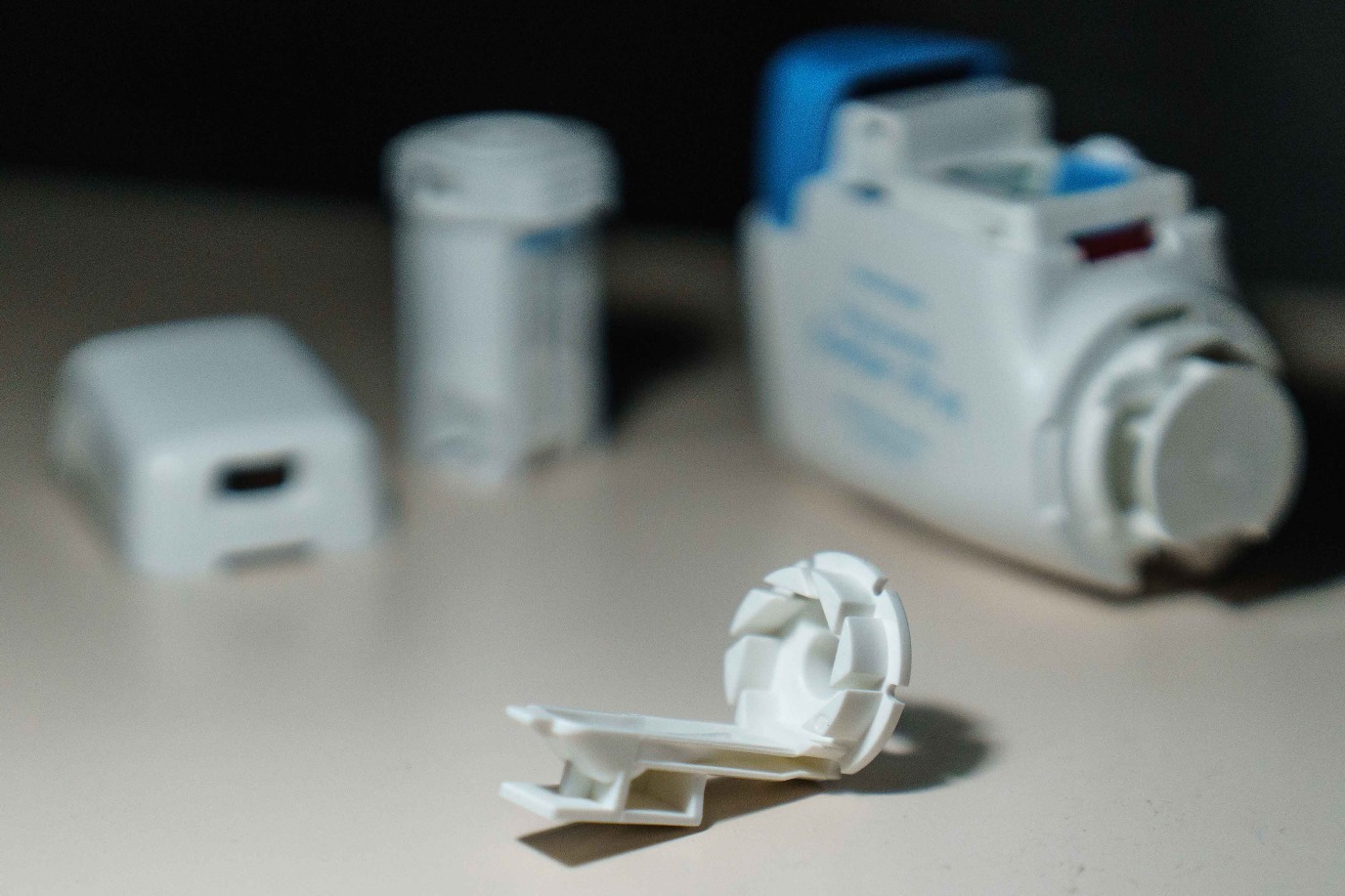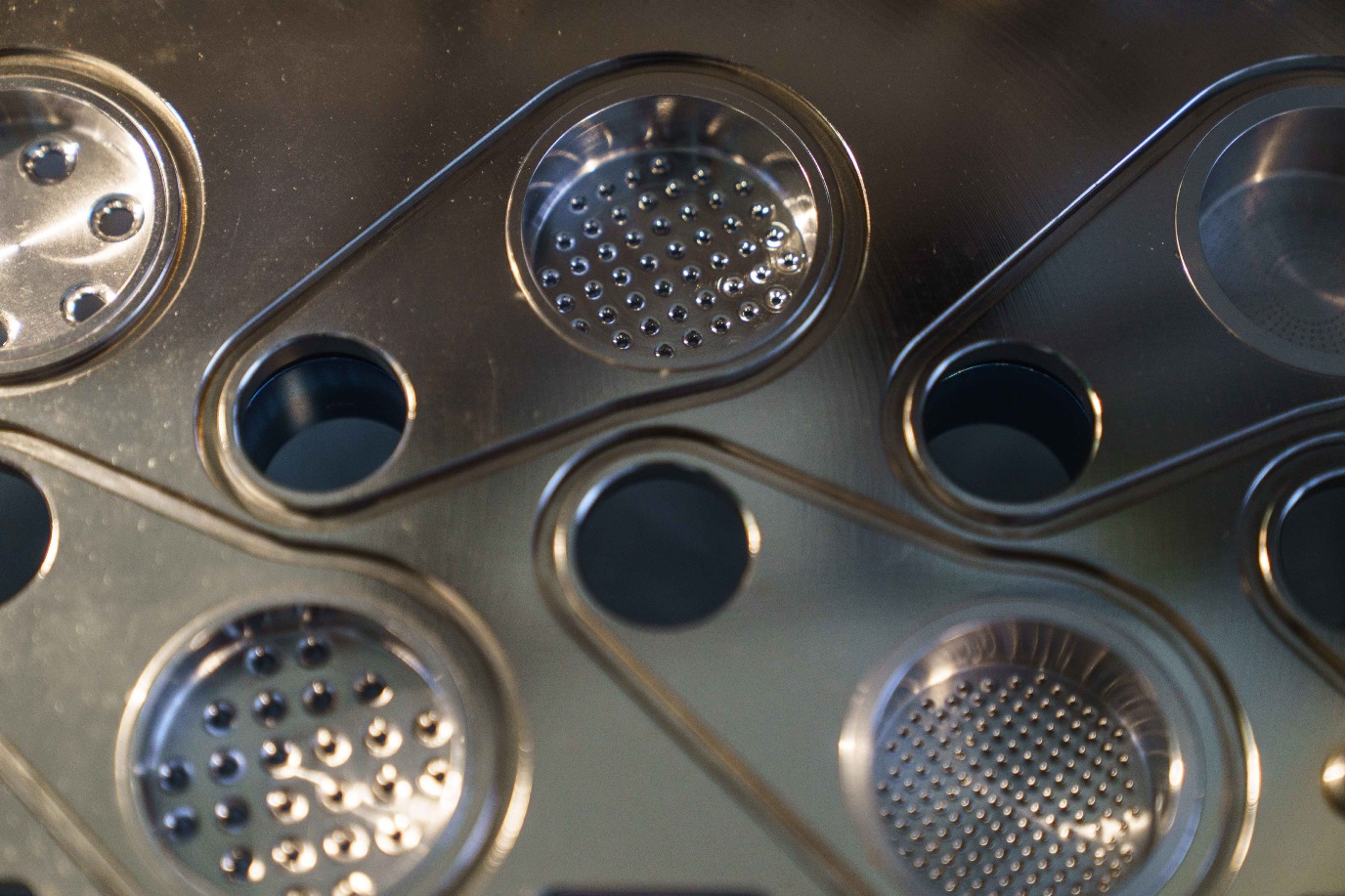Cyclone helps patients
At least 600,000 patients currently use an inhaler invented by the team around Erik Frijlink, Professor of Pharmaceutical Technology and Biopharmacy at the UG. ‘And that number is headed towards one million. It’s great when you are able to develop a product that can help patients’, Frijlink says. His team works on new ways to administer drugs, bringing together engineering and pharmacy, physics, medicine, and more.




The Novolizer is a powder inhaler that allows asthma patients, for example, to get medication into their lungs. The secret of the inhaler lies within the cyclone it contains, a chamber in which the medicine spins rapidly, driven by the patient’s inhalation force. ‘Powders tend to clump; just think of the icing sugar you sprinkle over a donut. Those lumps break up in the rotating flow.’
This chamber is an invention that originated from mechanical engineer Anne de Boer; the further development was done thanks to good teamwork. In order to manufacture it, they could rely, among other things, on their own workshop. ‘The technicians there are very experienced, and make prototypes for testing, for example. They are worth their weight in gold.’ In addition to the Novolizer, this resulted in the Genuair, an inhaler specifically designed for a tricky inhalant to dilate the airways, i.e. aclidinium. And then you have the Twincer, which has two cyclones, and the Cyclops which has one large cyclone and is capable of getting 10 times more powder into the lungs than standard inhalers.
It resulted in a series of patents, some of which are now a nice source of funding for new research. In addition, from the research also flowed a number of PhD theses, and over ten per cent of the pharmacy students do their final research project in Frijlink’s group every year. Working at the intersection of pharmacy and engineering suits Frijlink well. ‘We are trying to find answers to concrete problems. This is a process that requires you to thoroughly think about what you want, visualize it. And then, if that concept turns out to work, it gives you a real kick.’
Photos: Reyer Boxem
Text: FSE Science Newsroom | René Fransen
Every two weeks, UG Makers puts the spotlight on a researcher who has created something tangible, ranging from homemade measuring equipment for academic research to small or larger products that can change our daily lives. That is how UG researchers contribute to the solutions for big scientific and societal challenges.
For decades, engineering teaching and research at the UG has been part of a wide array of strong disciplines, and from a national point of view, our collaboration with the four technical universities is becoming more and more intensive.
Previous portraits of Makers can be found on the
overview page
.
More news
-
15 September 2025
Successful visit to the UG by Rector of Institut Teknologi Bandung
